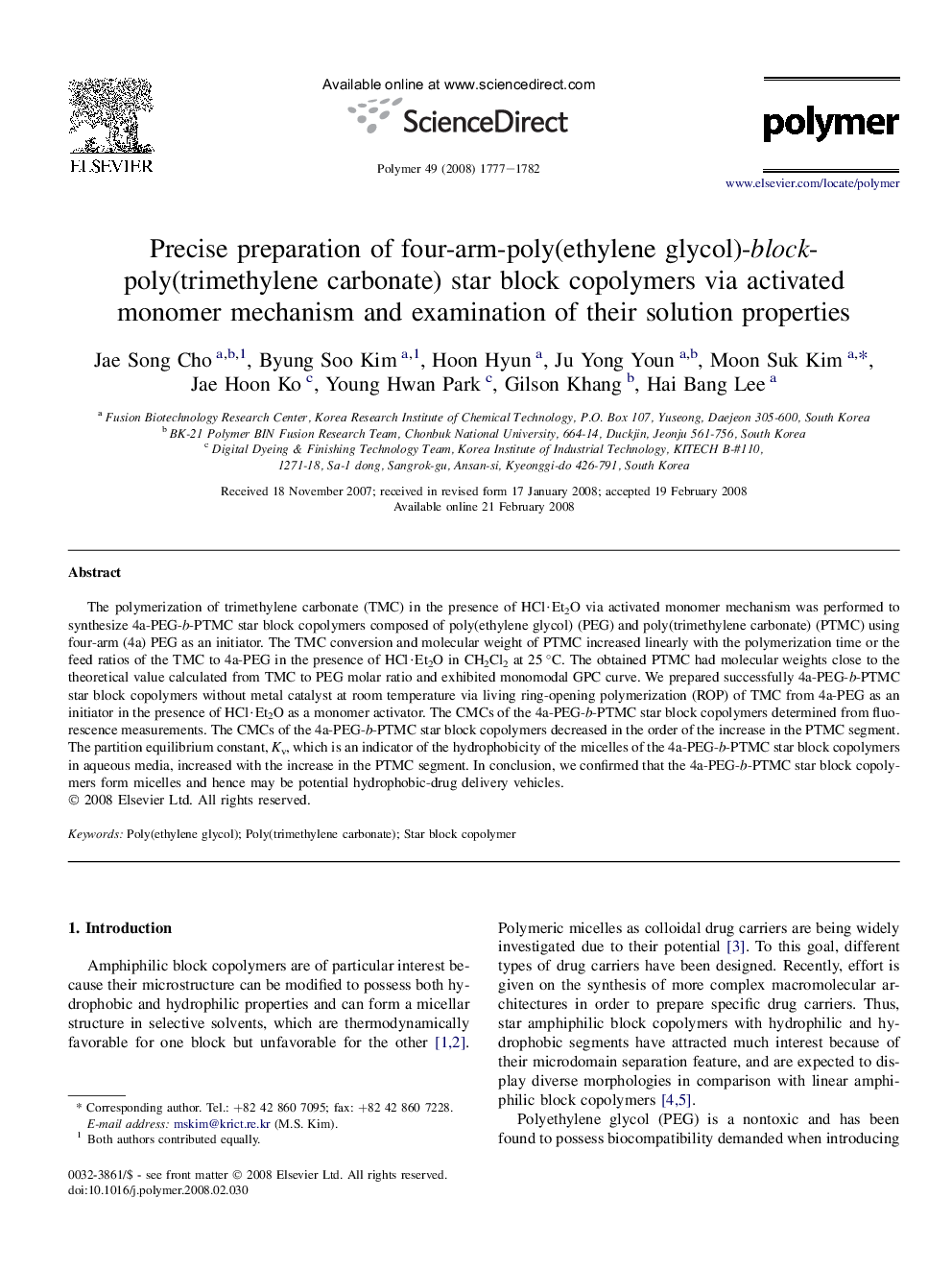| Article ID | Journal | Published Year | Pages | File Type |
|---|---|---|---|---|
| 5189054 | Polymer | 2008 | 6 Pages |
Abstract
The polymerization of trimethylene carbonate (TMC) in the presence of HCl·Et2O via activated monomer mechanism was performed to synthesize 4a-PEG-b-PTMC star block copolymers composed of poly(ethylene glycol) (PEG) and poly(trimethylene carbonate) (PTMC) using four-arm (4a) PEG as an initiator. The TMC conversion and molecular weight of PTMC increased linearly with the polymerization time or the feed ratios of the TMC to 4a-PEG in the presence of HCl·Et2O in CH2Cl2 at 25 °C. The obtained PTMC had molecular weights close to the theoretical value calculated from TMC to PEG molar ratio and exhibited monomodal GPC curve. We prepared successfully 4a-PEG-b-PTMC star block copolymers without metal catalyst at room temperature via living ring-opening polymerization (ROP) of TMC from 4a-PEG as an initiator in the presence of HCl·Et2O as a monomer activator. The CMCs of the 4a-PEG-b-PTMC star block copolymers determined from fluorescence measurements. The CMCs of the 4a-PEG-b-PTMC star block copolymers decreased in the order of the increase in the PTMC segment. The partition equilibrium constant, Kv, which is an indicator of the hydrophobicity of the micelles of the 4a-PEG-b-PTMC star block copolymers in aqueous media, increased with the increase in the PTMC segment. In conclusion, we confirmed that the 4a-PEG-b-PTMC star block copolymers form micelles and hence may be potential hydrophobic-drug delivery vehicles.
Related Topics
Physical Sciences and Engineering
Chemistry
Organic Chemistry
Authors
Jae Song Cho, Byung Soo Kim, Hoon Hyun, Ju Yong Youn, Moon Suk Kim, Jae Hoon Ko, Young Hwan Park, Gilson Khang, Hai Bang Lee,
